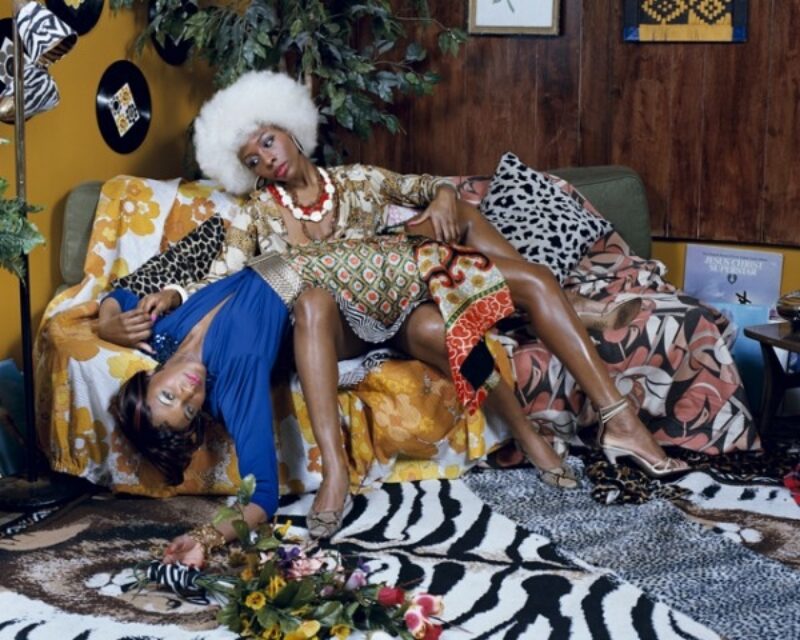Humanity and Imperfection

Mickalene Thomas’s most recent exhibition, MUSE: Mickalene Thomas Photographs at the Henry Museum and tête-à-tête is a reminder of the importance of community in the process of creating and experiencing art. The collection features Thomas’s photography and film—both lesser known aspects of her artistic repertoire, but ones that deserve just as much appreciation as the imposing rhinestone-studded paintings she’s best known for. The exhibit, based on a book of the same title released in 2015, is embellished with a tête-à-tête of works curated by Thomas of artists she knows and takes inspiration from, including the work of Derrick Adams, John Edmonds, and Carrie Mae Weems among others.

Derrick Adams. Crossroads. 2012. Courtesy of the artist.
MUSE begins with something unique to this exhibit’s presence at the Henry—a series of video installations by Thomas, of her and her partner, as well as other artists’ work Thomas has curated. Next in the exhibition is a tableau of Thomas’s own studio that allows insight into her production process—it’s a brightly-colored room with composite flooring, hand-covered furniture, and a vintage television playing a documentary of Thomas’s mother, Sandra “Mama Bush” Bush titled “Happy Birthday to a Beautiful Woman.” The re-creation feels lived-in and nostalgic, complete with touches of humanity such as the red heels laying on the floor and photographs of Thomas’s mother. This theme of humanity and imperfection is continued throughout the gallery—a press-on nail has fallen off in one photo, and a sock indentation is present on the leg of a model in another. These small touches combined with the imposing, confident expressions present on all subjects are what makes Thomas’s photographs so sensational.
Thomas has always tried to give her work a narrative about her subjects, saying about her art that, “If this is Mona Lisa, this is her story.” Thomas’s subjects are women she connects with, such as her mother, partners, and friends, all of whom “possess a profound sense of inner confidence and individuality.” Thomas captures who each woman is in her photographs, in an attempt to expand and diversify the ways women of color are depicted in art.

Mickalene Thomas. Quanikah Goes Up. 2001/2005. © Mickalene Thomas. Courtesy of the artist; Lehmann Maupin, New York and Hong Kong; and Artists Rights Society (ARS), New York.
The final component of MUSE isn’t a piece of art, but a reflection space, similar to the living room installation designed by Thomas from Figuring History, which was shown at the Seattle Art Museum earlier this year. This space, as well, was created to spark community conversations about the art. This reaction room further emphasizes the ongoing theme of community in art found in both the tête-à-tête of artists who inspire Thomas as well as her models.
MUSE: Mickalene Thomas Photographs and its accompanying tête-à-tête focus on a part of Thomas’s art that isn’t widely known. But, by going back to her photographs, which are the roots of many of her paintings, Thomas provides new insight into her process and how the artistic community presented in the tête-à-tête influences her art.
The TeenTix Press Corps promotes critical thinking, communication, and information literacy through criticism and journalism practice for teens. For more information about the Press Corps program see HERE.


